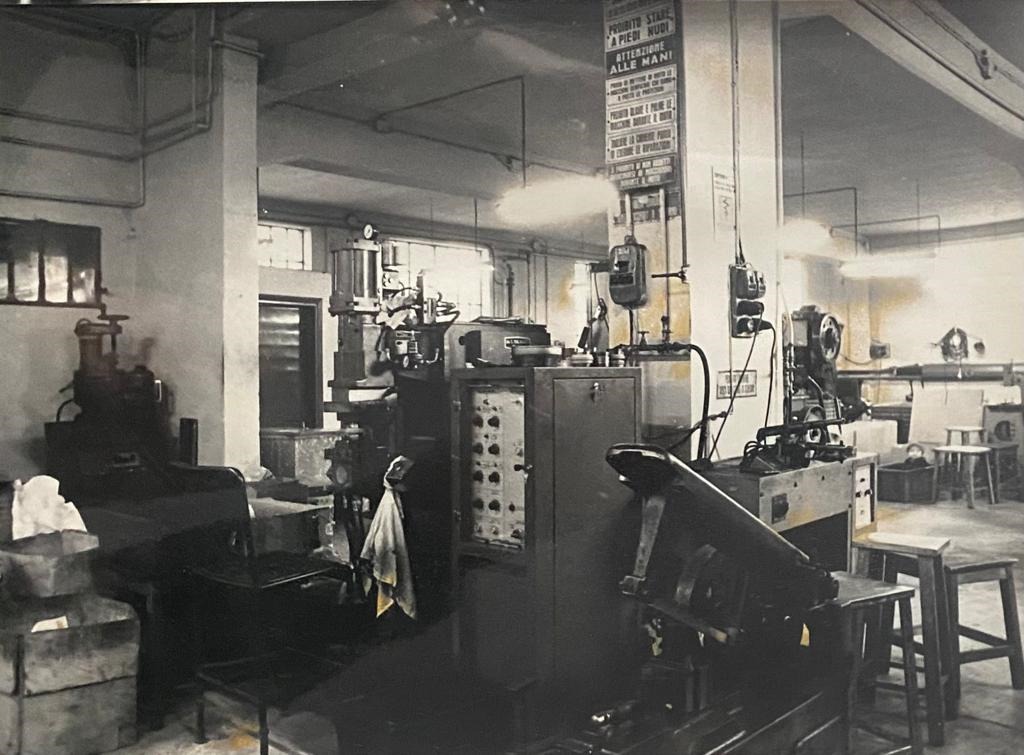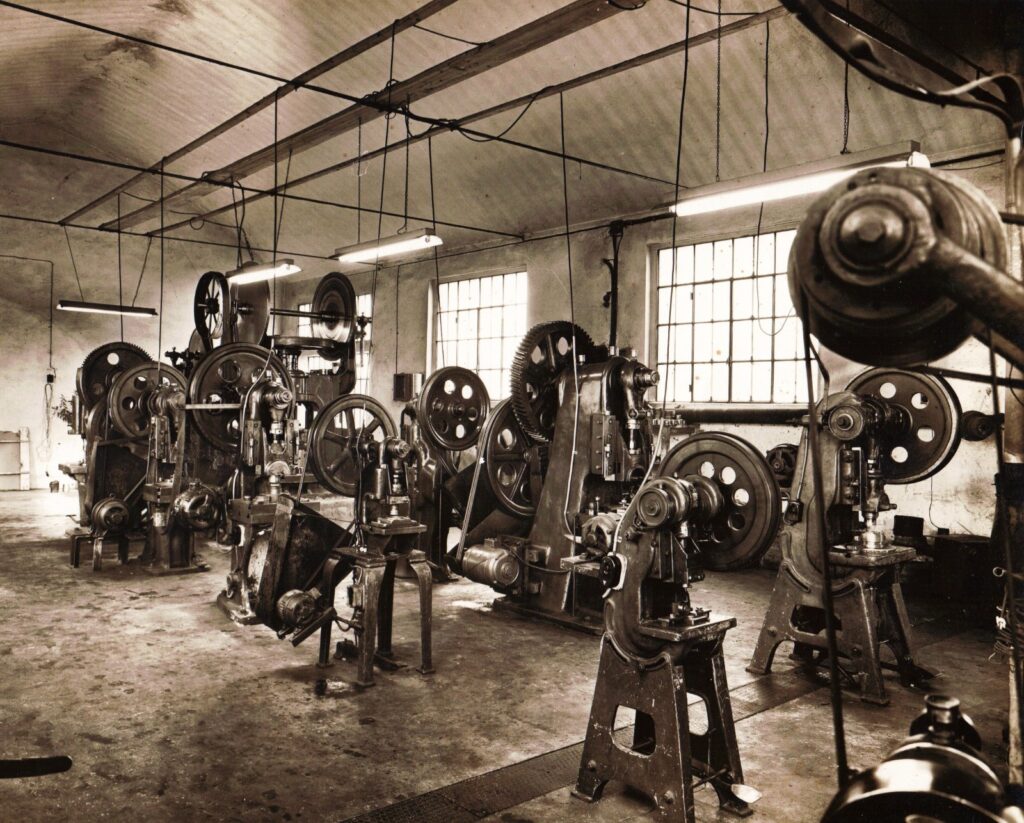How long for a good espresso? We could say less than a minute, but it’s in fact almost 2 centuries: the time it took our beloved espresso machine to become the jewel it is today. Everyday you wake up, grind and taste your warm and creamy coffee, unique in its taste and aroma, but it wasn’t always like that.
Who is behind this long revolution? All the bright designers who added their touch over the years, starting from the 19th century. Imagining the unimaginable. And factories like IMS Filtri, that were able to develop groundbreaking tools for those machines. Essential tools for essential flavors. Like the filter.
A bet on espresso
In the 19th century, coffee was a huge business in Europe with cafes flourishing across the continent. But coffee brewing was a slow process and customers often had to wait for their cup. Seeing an opportunity, inventors across Europe began to explore ways of using steam machines to reduce brewing time. It was, after all, the age of steam.
Nullo Dandolo Monti was one of the first innovators to bet on coffee making, specializing on filtration systems. He was a pioneer, brave enough to go through the biggest challenge of the industrial revolution: mechanization. First thing, he bought a press and put it in his basement. But the ceiling was too low, so he had to cut the machine down and dig a small compartment underneath so that he could place his legs in and use it. It was the beginning of the 1900s.
With that press, he began studying filters’ manufacture and functionalities and shaped his first nickel-silver items for the early machines. He was soon noticed for his innovative perforating technology and started a collaboration with Fabbrica Italiana Filtri as a consultant.
The first espresso machines
In the original design of the first espresso machine patented by Luigi Bezzera, a large boiler was heated until it pushed water and steam through a tamped puck of ground coffee. The same mechanism also functioned as heat radiators, lowering the temperature of the water at 90°C. Ideal for brewing. Et voilà, espresso.
For the first time, a cup was prepared in a matter of seconds. But as the machine was heated over an open flame, it was hard to control pressure and temperature, and nearly impossible to produce a consistent shot. And consistency is key in the world of espresso.
That’s when Desiderio Pavoni got in the game. He invented the first pressure valve, so hot coffee wouldn’t splash all over the barista from the instant release of pressure, further expediting the brewing process and earning the gratitude of baristas everywhere. And after few other improvements, like the steam wand, at the 1906 Milan Fair, the two introduced “caffè espresso” to the world. This column shaped and imposing machine was so polished you could mirror yourself in it.

The first filters… brought up the “crema”
A good filter is always necessary for an even extraction and a clean, rich cup of coffee. This was especially true for these early machines. They could produce up to 1,000 cups of coffee per hour, but relying exclusively on steam, they were imbuing the coffee with a burnt or bitter taste as they could only conjure up, at best, 2 bars of atmospheric pressure – not even enough to be considered espresso by today’s standard.
For this reason the filters—Monti worked on—were big in size (they were called “pans”) and had larger holes. A wider base, less thickness, and a larger grain size put up less resistance to the low-pressured steam passing through the 8 grams of wet ground coffee. The result: a pleasant taste in the cup and the first touch of cream on the surface.
Over the next few years, as electricity replaced gas and Art Deco replaced the chrome-and-brass aesthetic of the early 20th century, the machines became smaller and more efficient, but no innovators managed to brew with more than 2 bars of pressure without burning the coffee. Until the ‘40s.
Designers behind espresso’s revolution
The machine to finally surpass the two-bar brewing barrier was Gaggia. Gaggia transformed the hood ornament into a chromed-out counter-top spaceship with the invention of the lever-driven machine.
Steam pressure in the boiler forces the water into a cylinder where it is further pressurized by a piston lever. Not only did this obviate the need for massive containers, but it also increased the water pressure to 9 bars. And brought in a big foamy crema, defining characteristic of a quality coffee. Everybody meet contemporary espresso.
But it was the architect Gio Ponti that changed coffee machines design radically. With him, Pavoni realized the first device with a horizontal boiler: an elegant body with every single part evident in its function and aerodynamic shapes for supply units. Ponti thus created a real “celebration” to the Italian espresso. It is still nowadays one of the hardest and most valuable pieces to find for its historical aesthetic value.
“Disdain for the machine showing the effort of its work; in machines, as well in men, we should appreciate the hermetic nature of the body, the ability in work, the elegance in doing it” – Gio Ponti
Filters behind espresso’s success
In the same years, Nullo Dandolo and his son Francesco Ferruccio founded IMS Filtri. As Italy was just resurfacing from the II world war, it was—without a doubt—an ambitious task, but with their experience and know how they were able to experiment and transform their filters along with the transformation of the machines over the years.
With the arrival of the piston and the lever, the proportions between the ground coffee, its surface area, and its thickness change dramatically. The pressure on the coffee puck is greatly increased and the water now can fully exploit it, resulting in a dense beverage, rich in aroma and topped with a thick, lingering crema.
E61: the Cadillac of coffee machines
Next milestone in the development of espresso machines? In 1961, when piston technology was surpassed by the Faema E61. It uses a motorized pump to provide the classic 9 atmospheric bars. The pump draws tap water directly from a plumbing line, sending it through a spiral copper pipe inside a boiler before being shot through the ground coffee. A heat exchanger keeps the water to the ideal brewing temperature.
With its technical innovations, smaller size, versatility and streamlined stainless steel design, the E61 was an immediate success and is included in the pantheon of the most influential coffee machines of history: mechanics and design are still the same today.
It was the right time (from the 70s onward) for Massimo e Claudio, Monti’s third generation, to experiment with the new possibilities given by the improved machine. They kept IMS up to date with new technology, invented a new perforation system for conical holes and tested new materials, like INOX 304. But mostly, they were able to make all kind of coffee lover happy with their cups.
The company was led through the second half of the 20th century as a market leader, ready for the challenges of the new millennium.

IMS today
Today, IMS’ CEOs Giulia and Emanuele, are facing fierce competitors, new designs and very fast changing techniques. And they’re succeeding: innovation and dedication have been transforming the company into an international benchmark in coffee filtration—for espresso and more. After all, they grew up playing in the boxes containing IMS filters! They witnessed the evolution of these tools with their very eyes.
From 1946, IMS has always been driven by a desire to produce more consistent and flavorful espresso, while also improving the efficiency and ease of use of the machines themselves thanks to purpose-built filters.
Today, IMS have a wide range of filters available, each with their own unique characteristics and advantages. Top-notch lines for espresso, mocha and filter coffee.
IMS won the bet
IMS has strong roots that reach back into the history of coffee machines. Its innovative spirit has been passed on, allowing each generation to make their own improvements up to the present day. Their secret? A common passion. They are a close-knit family with the goal of always improving. They won the bet.




